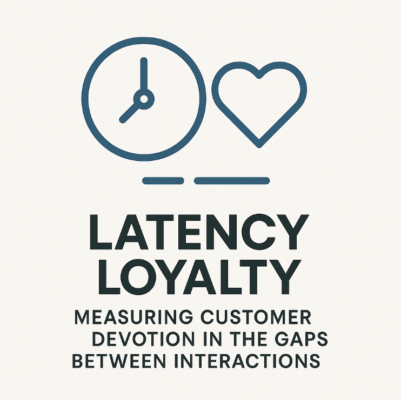
Traditional CRM metrics tend to focus on moments of activity: purchases, clicks, replies, complaints, and calls. But what about the in-between moments—the silent weeks, months, or even years when a customer isn’t visibly engaging but hasn’t walked away either? These quiet stretches often hold the true test of loyalty. This concept, known as Latency Loyalty, explores the hidden devotion that exists during the dormant phases between customer interactions—and how CRMs can measure and nurture it.
In most CRM systems, long periods of inactivity are seen as warning signs. Silence triggers re-engagement emails, win-back campaigns, or churn risk flags. Yet, not all silence equals disinterest. For many customers—especially those with long buying cycles, high-consideration products, or emotionally-driven relationships—absence doesn’t mean abandonment. Instead, it reflects a different form of loyalty: one that is quiet, patient, and waiting.
Latency Loyalty acknowledges that some of the most valuable customers are not the loudest or most frequent. They are the ones who come back when it counts, remain subscribed for years, and recommend your brand during conversations—despite low activity. The challenge is that these customers live below the CRM radar. They don’t give off constant signals. But they are watching, listening, and remembering.
So, how can CRM systems detect and measure loyalty that hides in the latency?
First, CRMs must integrate passive tracking. This includes monitoring non-transactional signals such as email opens without clicks, silent browsing, or lingering on content without conversion. These micro-behaviors, when viewed collectively, can indicate an ongoing emotional connection—even in the absence of action.
Second, CRMs should incorporate contextual latency models. Not all gaps are equal. For instance, a six-month pause in a B2B SaaS subscription may be alarming, but for a luxury travel brand, it may be entirely normal. Understanding industry-specific latency thresholds—and adjusting alerts or engagement rules accordingly—can prevent overreacting to healthy silence.
Third, consider long-term pattern analysis. By reviewing the lifecycle of customers over years, not just months, CRMs can identify those who exhibit episodic engagement but high lifetime value. These users may go dark for long periods but return consistently when it matters. Creating custom segments for these “seasonal loyalists” can reshape how success is defined.
Another strategy is to shift focus from reactive engagement to ambient relationship maintenance. This means delivering quiet value—like relevant content, brand storytelling, or helpful updates—even when the customer isn’t clicking. In these dormant phases, the CRM’s role becomes one of presence rather than pressure.
Critically, businesses must also respect the silence. Latency Loyalty thrives when customers feel they are not being badgered for every lapse in activity. Trust builds in the gaps. CRM systems that over-automate outreach during quiet phases may actually harm long-term loyalty.
In essence, Latency Loyalty asks a provocative question: can a CRM value a customer even when they’re not “doing” anything?
The answer lies in rethinking engagement not as a constant need for interaction, but as a continuous thread of relevance, recognition, and respect—even in silence. By designing CRM systems that honor the quiet spaces, brands can unlock a deeper, more resilient form of devotion—one that lasts longer than any single click.